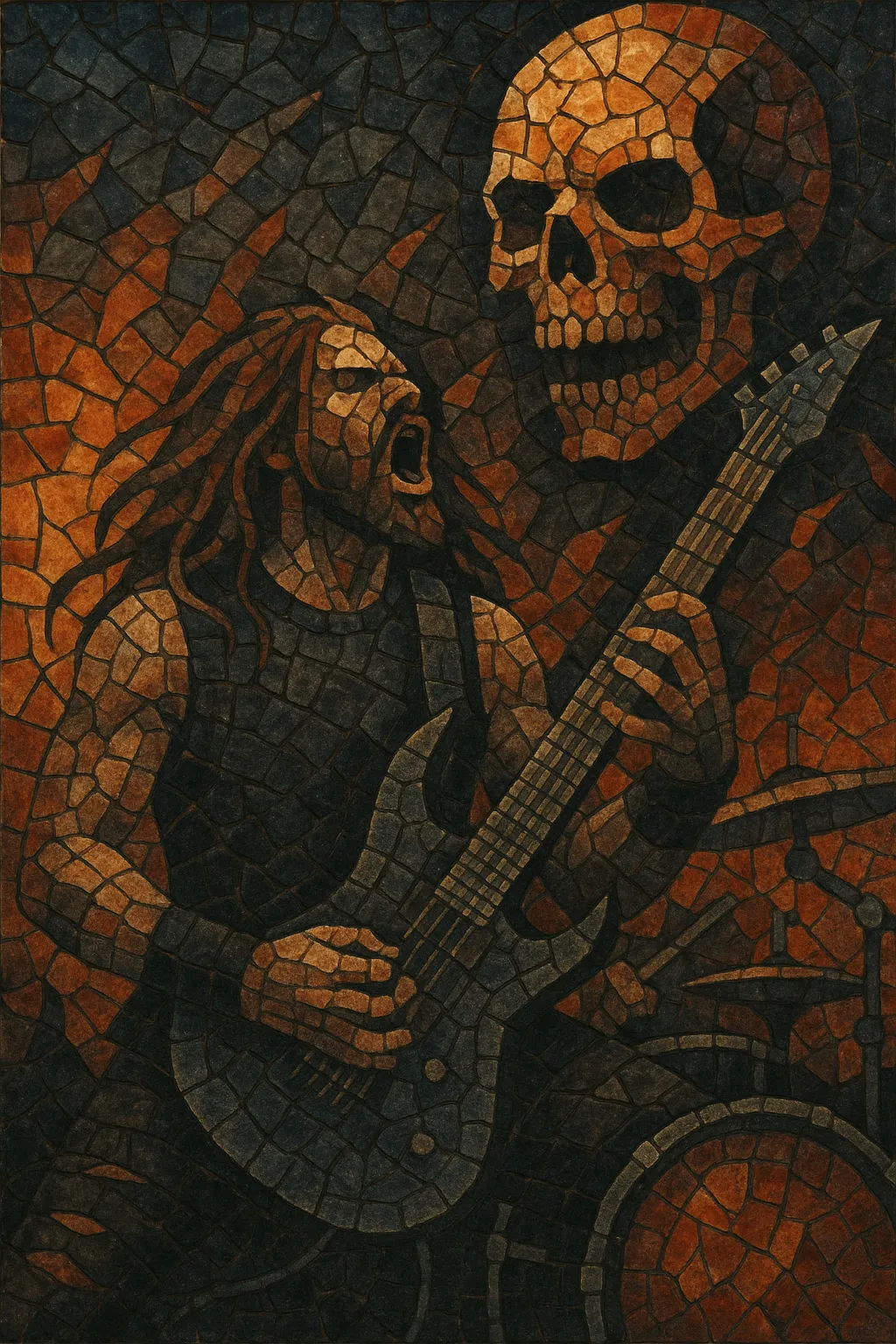
Metalcore is a fusion of hardcore punk’s urgency and ethos with heavy metal’s riff language and technicality. It is defined by tightly palm‑muted riffs, rapid double‑kick drumming, and frequent breakdowns—rhythmic, syncopated passages written to accentuate impact and crowd movement.
Vocals typically alternate between harsh screams or growls and, in many bands, soaring clean choruses—a contrast that emphasizes both aggression and catharsis. Harmony and melody often borrow from melodic death metal, yielding minor‑key leads, harmonized guitars, and hook‑driven refrains. Modern production favors precise editing, dense guitar layering, and punchy drum sounds that keep complex rhythms clear at high intensity.
Metalcore emerged in the United States as hardcore bands increasingly adopted metal techniques—heavier riffing, double‑kick patterns, and minor‑key lead work—while retaining hardcore’s ethos and song energy. Early torchbearers such as Integrity and Earth Crisis helped codify the blend, while Converge brought dizzying rhythmic complexity and emotional intensity that pushed the sound forward.
Throughout the 1990s, regional scenes—from the Midwest to the Northeast—refined the style. The term “metalcore” came to describe this hybrid space where hardcore breakdowns and metallic riff craft coexisted, setting the stage for a broader wave in the next decade.
In the early 2000s, the New England scene (notably Killswitch Engage, Shadows Fall, and Unearth) propelled metalcore into mainstream metal consciousness. These bands fused melodeath‑inspired guitar leads with hook‑centric clean choruses, producing a sound both abrasive and accessible. Tours like Ozzfest and the Warped Tour amplified the reach of acts such as As I Lay Dying, Trivium, and Bullet for My Valentine, making breakdowns and sing‑along choruses familiar across metal and punk audiences.
The style diversified substantially. Some bands emphasized technical precision and progressive structures (e.g., August Burns Red, Architects), while others leaned into melodic radio‑readiness. Parallel hybrids emerged: deathcore intensified the extremity by merging death metal with metalcore frameworks, mathcore explored jagged rhythms and dissonance, and electronicore layered synths and programming over core foundations. International scenes—especially in the UK and Australia (Parkway Drive)—cemented metalcore as a global movement.
Modern metalcore exhibits polished production, lower tunings, and rhythmic approaches influenced by djent and progressive metal, while still centering breakdowns and dynamic harsh/clean vocal interplay. The genre’s vocabulary—syncopated chugs, halftime drops, and melodeath‑tinged hooks—has permeated adjacent styles, ensuring metalcore’s continuing influence and periodic revival cycles.

